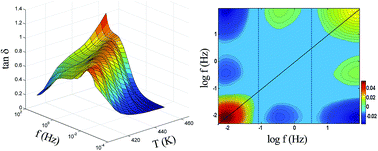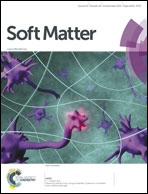Origin of the crossover in dynamics of the sub-Rouse modes at the same temperature as the structural α-relaxation in polymers
Abstract
The nature of the liquid–glass transition remains an unsolved fundamental problem. One aspect is the striking change in dynamics of the structural α-relaxation generally observed at a temperature TB above Tg in all glass-formers. More intriguing in the case of polymers is that the change of dynamics occurs not only in the structural α-relaxation but also in the sub-Rouse modes, i.e. chain modes in between the α-relaxation and the Rouse modes. However, the nature of the dynamic crossover of the sub-Rouse modes remains unclear. In this paper, the dynamics of a series of poly(n-alkyl methacrylates) with different molecular weights and microstructures studied by mechanical spectroscopy are reported. We demonstrate that the sub-Rouse modes exhibit a similar crossover of dynamics at the same TB as the α-relaxation. This property shared by the two viscoelastic mechanisms is remarkable. By invoking the results from the studies using positron annihilation spectroscopy and adiabatic calorimetry, we show that both viscoelastic mechanisms are coupled to density, correlated with the change of the configuration entropy, and are intermolecularly cooperative. The time scale of sub-Rouse modes at TB of the polymers studied is approximately independent of molecular weight and micro-structure of the polymers studied. The findings enhance the understanding of the sub-Rouse modes and their manifestation in the viscoelasticity of polymers in the glass–rubber transition region.


 Please wait while we load your content...
Please wait while we load your content...